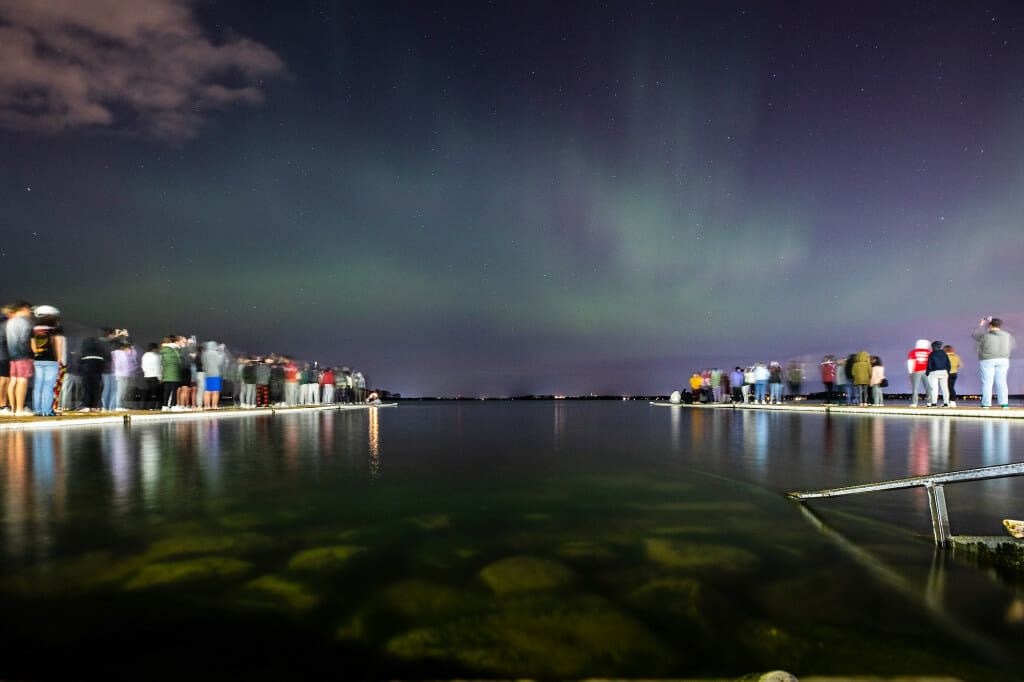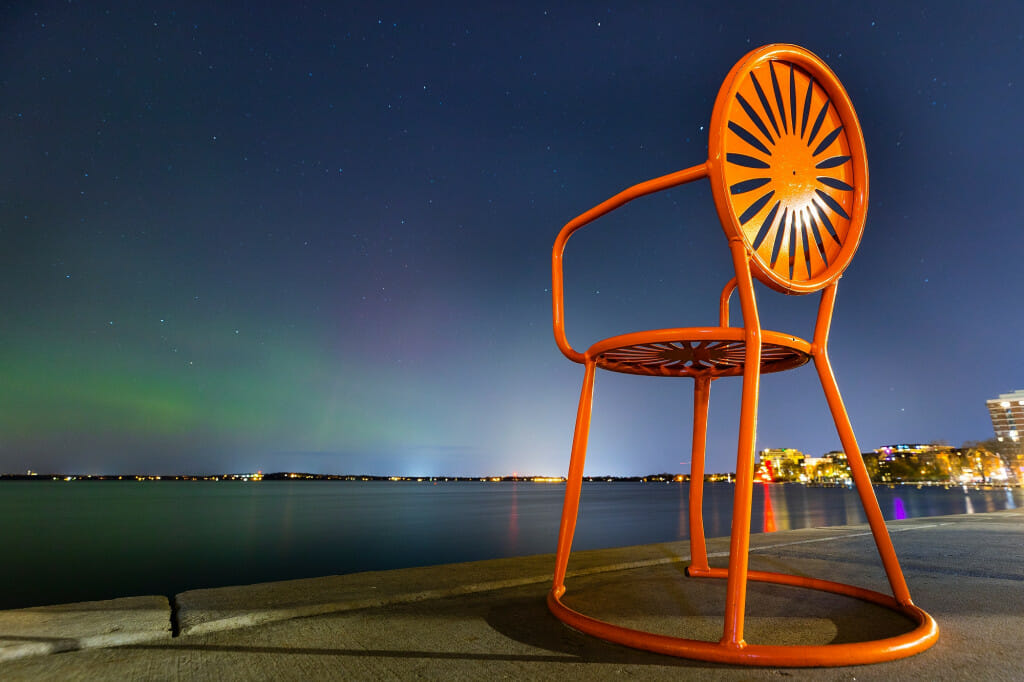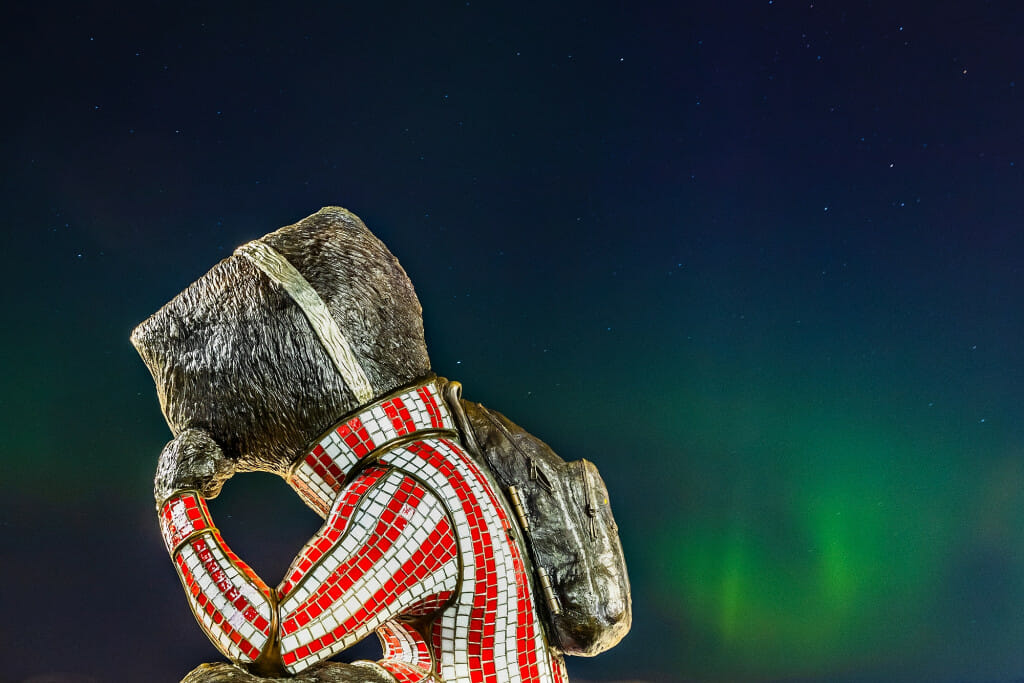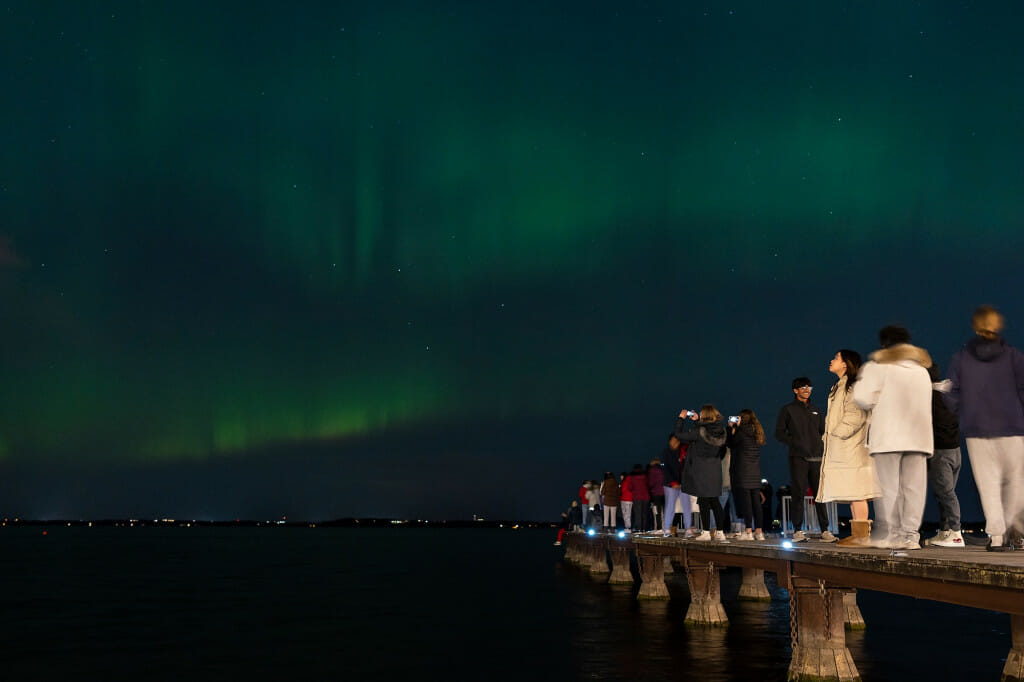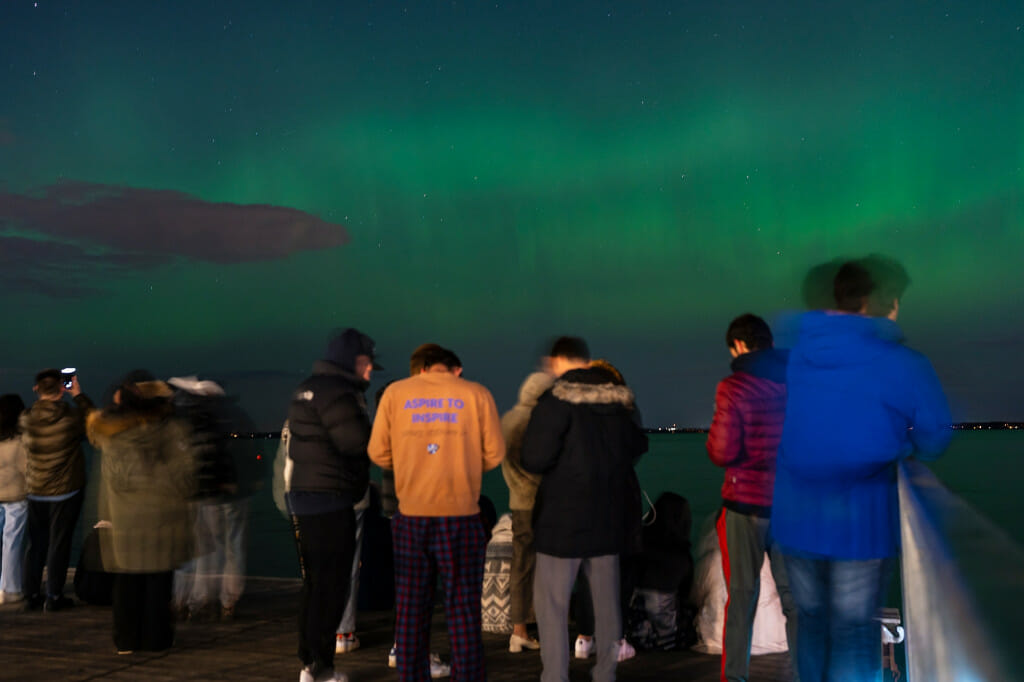Northern lights put on show above Lake Mendota
Members of the University of Wisconsin–Madison community who stayed up late Sunday evening were treated to a dazzling light show as the aurora borealis — or northern lights — danced across the night sky in hues of green and pink.
Despite this year’s frosty spring temperatures, the Madison area is too far south to regularly experience the aurora borealis, which is a much more frequent occurrence at higher latitudes. So, what produces the celestial light show, and why was it visible across a much larger area this week?
Auroras are the product of charged particles colliding with the Earth’s upper atmosphere. These particles come from the sun and are carried by solar winds. When they arrive at Earth, the planet’s magnetosphere guides their movement through the upper atmosphere — this results in two regions where auroras are typically visible centered in the upper latitudes around the north and south magnetic poles.
Sometimes, though, changes in the sun’s activity and resulting solar winds can cause larger disruptions in the magnetosphere, which are called geomagnetic storms. These storms can produce auroras at lower latitudes than usual. That’s exactly what happened on Sunday evening, when a significant geomagnetic storm produced aurora across a wide swath of North America.
While auroras are striking, they can appear brighter in long-exposure photos than when viewed in-person. The geomagnetic storms that produce them can also disrupt satellites. Still, the light show was a sight to behold for students gathered along the shore of Lake Mendota. It was also captured by timelapse cameras atop the Atmospheric and Oceanic Sciences building on campus:

